The Microprocessor and its applications
INTRODUCTION:
No other invention in history has spread so quickly throughout the world or touched so deeply on so many aspects of human existence. Today there are almost 15,000 million microchips of some kind in use.
Facing that reality, who can doubt that the microprocessor is not only transforming the products we use, but also our way of living and, finally, the way we perceive reality.
Although we recognize the penetration of the microprocessor in our lives, we are already growing indifferent to the presence of those thousands of tiny machines that we find ourselves without knowing it every day. So, before it is integrated too imperceptibly into our daily existence, it is time to celebrate the microprocessor and the revolution that it has originated, to appreciate the miracle that each of those tiny silicon chips really is and to meditate on of its meaning for our lives and those of our descendants.
Microprocessor definition:
The microprocessor is the part of the computer designed to carry out or execute the programs. This is being the brain of the computer, the engine, the heart of this machine. This executes instructions that are given to the computer at very low level doing simple logical operations, such as adding, subtracting, multiplying and dividing. The microprocessor, or simply the micro, is the brain of the computer. It is a chip, a type of electronic component inside which there are thousands (or millions) of elements called transistors, whose combination allows to perform the work entrusted to the chip.
The microprocessor has an architecture similar to the digital computer. In other words, the microprocessor is like the digital computer because both perform calculations under a control program. Accordingly, the history of the digital computer will help us understand the microprocessor.
Parts of the microprocessor:
- The encapsulation: it is what surrounds the silicon wafer itself, to give it consistency, prevent its deterioration (for example, by oxidation through the air) and allow the link with the external connectors that attach it to its socket to its motherboard.
- The cache memory: it is an ultrafast memory that uses the micro to have on hand certain data that will be predictably used in the following operations without having to go to the RAM memory by reducing the waiting time. For example: in a library, instead of looking for a certain book through a bank of paper files, computers are used, and thanks to the cache memory, it quickly obtains information. All PC-compatible microphones have the so-called first level internal cache or L1; that is, the one that is closest to the micro, so much so that it is encapsulated next to it. The most modern microphones (Pentium III Coppermine, Athlon Thunderbird, etc.) also include in their interior another level of cache, bigger but somewhat less fast, the second level cache or L2.
- Mathematical Coprocessor: or correctly the FPU (floating point unit). That is the part of the micro specialized in that kind of mathematical calculations, formerly was on the outside of the micro on another chip. This part is considered a "logical" part together with the registers, the control unit, memory and data bus.
- The records: they are basically a type of small memory with special purposes that the micro has available for some particular uses. There are several groups of registers in each processor. A group of registers is designed for control of the programmer and there are others that are not designed to be controlled by the processor but that CPU uses them in some operations in total are thirty-two registers.
- Memory: it is the place where the processor finds its program instructions and its data. Both the data and the instructions are stored in memory, and the processor takes them from there. Memory is an internal part of the computer and its essential function is to provide a workspace for the processor.
- Ports: is the way in which the processor communicates with the external world. A port is similar to a phone line. Any part of the circuitry of the computer with which the processor needs to communicate is assigned a port number that the processor uses as a telephone number to call the circuit or special parts.
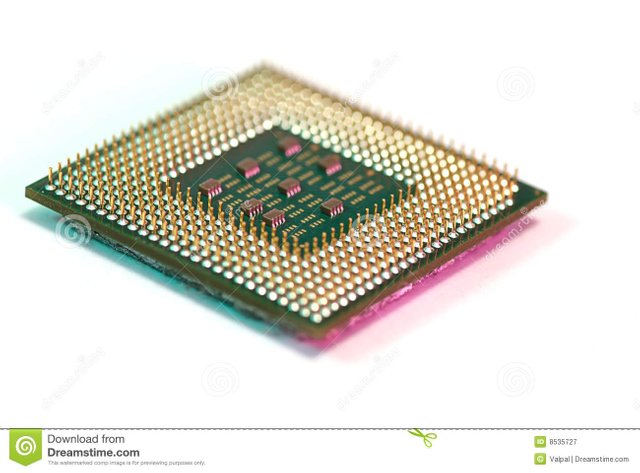
The microprocessors are classified:
Based on various factors. These factors are designed to evaluate the speed of the processor and the amount of information it can transfer. Speed ratings for microprocessors are measured in gigahertz or megahertz, while the amount of information they can transfer is measured in kilobytes or megabytes.
General Purpose Microprocessor: As the name implies, this kind of microprocessor is used in the performance of various tasks in reference to the processing of information. It is used mainly in the manufacture of computers whose purpose is also of a general nature.
Microprocessor of determined purpose: this kind of microprocessor was created in order to perform a specific, specific task. For this reason, once programmed, they execute the same program, which is stored in ROM.
. Speed: The speed of a processor is classified according to the number of processing cycles per second it generates. These cycles are commonly classified in gigahertz and megahertz. 1 gigahertz equals 1 billion cycles of processing per second, while 1 megahertz equals 1 million cycles per second.
Cache size: Modern microprocessors contain data caches that are designed to store
information that is being transmitted to and from the processor. A larger cache allows faster access to frequently used data, which provides better processing speeds. Caches are designated as L1, L2 or L3 caches and generally range from 64 kilobytes to 1 megabyte in size.
Bus speed: Processors are also classified according to the speed with which they transfer data between the processor and the motherboard. This classification is different from the speed of the processor, although it is also measured in megahertz or gigahertz. Commonly known as the FSB (frontal bus, for its acronym in English) or SB (system bus, for its acronym in English), this classification has a strong impact on the overall power of a processor.
 center>
center>History of microprocessors
For starters, the clock speed was just over 100 KHz (yes, you read correctly, kilohertz), had a 4-bit bus width and could handle a maximum of 640 bytes of memory. Really an authentic jewel that by then could perform many tasks, but unfortunately has no point of comparison with current microphones. Among its applications, we can highlight its presence in the Busicom calculator, as well as provide the first dyes of intelligence to inanimate objects.
Soon after, however, on April 1, 1972, Intel announced an improved version of its processor. It was the 8008, which was the main novelty with an 8-bit bus, and the addressable memory was extended to 16 Kb. In addition, it reached the figure of 3500 transistors, almost double that of its predecessor, and can be consider as the antecedent of the processor that would serve as the heart of the first personal computer.
Just two years later, Intel announced that long-awaited first personal computer, named Altair, whose name comes from a destination of the Enterprise ship in one of the chapters of the popular television series Star Trek the week in which the computer was created . This computer had a cost of around 400 dollars at the time, and the processor was supposed to multiply by 10 the performance of the previous, thanks to its 2 MHz speed (for the first time this measure is used), with a memory of 64 Kb In a few months, he managed to sell tens of thousands of units, in what supposed the appearance of the first computer that people could buy, and not just to use.
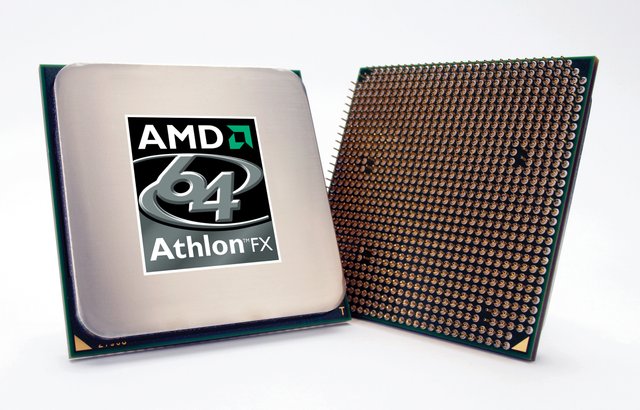
The introduction of IBM
However, as we all know, the personal computer did not become such until the appearance of IBM, the blue giant, in the market. Something that happened on two occasions in the months of June 1978 and 1979. Dates in which, respectively, made the appearance of the microprocessors 8086 and 8088, which happened to form the so-called IBM PC, which sold millions of units of desktops throughout the world. The success was such that Intel was named by the magazine "Fortune" as one of the best businesses of the seventies. Of the two processors, the most powerful was the 8086, with a 16-bit bus (finally), clock speeds of 5, 8 and 10 MHz, 29,000 transistors using 3-micron technology and up to a maximum of 1 Mega. addressable memory.
The performance had multiplied by 10 times with respect to its predecessor, which was a real breakthrough in the world of computing. As for the 8088 processor, it was exactly like this one, except for the difference that it had an 8-bit bus instead of a 16-bit bus, being cheaper and getting better backup in the market.
In 1982, specifically on February 1, Intel gave a new twist to the industry with the emergence of the first 80286. As the main novelty, it should be noted that finally could be used so-called virtual memory, which in the case of 286 could reach up to 1 Giga. We must also take into account the fact that the time spent had allowed Intel engineers to investigate further in this field, moved no doubt by the great success of sales of the previous mics.
This resulted in a 16-bit bus, 134,000 transistors using a 1.5-micron technology, a maximum addressable memory of 16 megabytes and clock speeds of 8, 10 and 12 MHz. In terms of performance, we could say that we had multiplied between three and six times the capacity of 8086, and supposed the first computer that did not manufacture IBM exclusively, but many other companies, encouraged by the successes of the past, decided to create their own machines. As a curious fact, suffice it to mention the fact that around the six years that are granted life, there is an estimate that points to that they were placed around the 15 million computers worldwide.
The year of 1985 is key in the history of the processors. On October 17 Intel announced the appearance of the 80386DX processor, the first to have a 32-bit architecture, which meant a speed in processing the instructions really important with respect to its predecessor.
Said processor contained in its interior around the 275000 transistors, more than 100 times those of the first 4004 after only 14 years. The clock was already up to 33 MHz, and was able to address 4 Gigabytes of memory, a size that has not yet been surpassed by another Intel processor dedicated to the domestic market. In 1988, Intel developed a little late a simple system to update the old 286 thanks to the appearance of the 80386SX, which sacrificed the data bus to leave it in a 16-bit, but at lower cost.
These processors burst with the explosion of the graphic environment Windows, developed by Microsoft a few years before, but that had not had enough acceptance on the part of the users. There had also been some environments that had not worked badly at all, such as the Gem 3, but it is not until now when these types of work environments become popular, making it easier to face a computer, which at that time only We knew a few. Windows became a breath of fresh air for the industry, since it allowed people of any condition to manage a computer with minimum computer requirements.
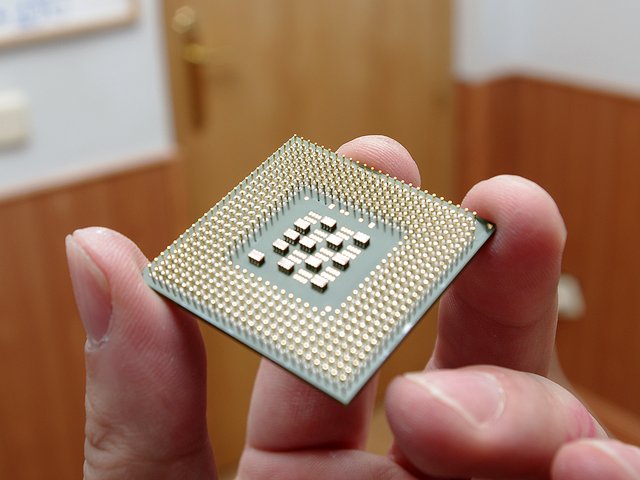
The Pentium arrives
However, Intel was not contemplating the great work that had been created, and quickly announced that soon would be on the street a new range of processors that would multiply in a general way by five the average yields of the 80486. It was the Pentium, known by P5 in the world of computer science while they were being developed, and of which the press of half the world augured a great future, just as it has been.
These processors will go down in history for being the first to which Intel did not baptize them with a number, but with a word. This was because other companies engaged in the production of processors were using the same names since they could not register a chain of them as a trademark, and therefore, were in the public domain.
So Intel had no choice but to put a word to his family of processors, which, in addition, over time, became popular in the United States in such a way, that was identified with speed and power in numerous comics and TV shows. These processors that started from an initial speed of 60 MHz, have reached up to 200 MHz, something that nobody had been able to predict a few years before.
Pentium Pro and Pentium II
The appearance, on March 27, 1995, of the Pentium Pro processor for network servers and workstations a new air, as it happened with the Pentium in the domestic environment. The power of this new processor had no comparison until then, thanks to the 64-bit architecture and the use of a revolutionary technology such as .32 microns, which allowed the inclusion of five and a half million transistors inside.
The processor had a second chip in the same package, which was responsible for improving the speed of the cache, which resulted in a substantial performance increase. The clock frequencies were kept as a limit above 200 MHz, starting from a minimum of 150 MHz. A processor that in principle does not have many signs of jumping into the domestic market, since the Pentium MMX processors seem to cover all the needs for now in this field. We can not assure that in the near future this does not end up happening, because in the computer world the strangest things have happened, and you never know where a market in constant evolution can pull.
An evolution that Intel demonstrated very recently with a new processor, called Pentium II, which is simply a new ingenuity that adds the technologies of the Pentium Pro with the MMX. As a result, the Pentium II is the fastest processor of all that Intel has sold. At the moment only 233 and 266 MHz versions are available, but after this summer we will be able to enjoy the 300 MHz version, which will mean a new clock speed record. The Pentium II, whose features were treated in detail in the cover story last month of the magazine, is today (for a short time) the end of the evolutionary chain of Intel.
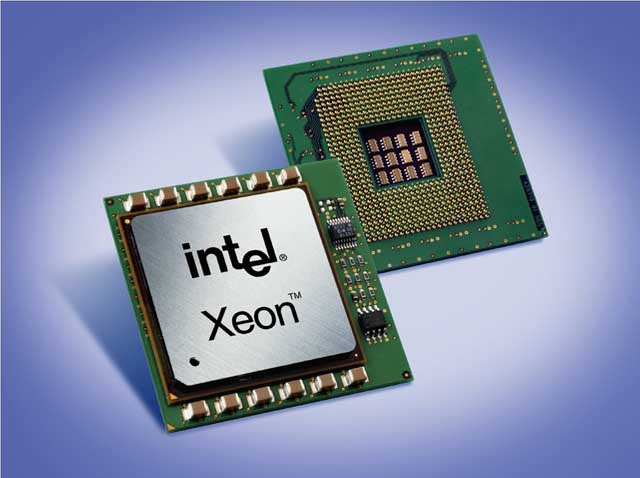
The future of microprocessors
The evolution of processors is something that does not seem to escape the attention of millions of people, whose work depends on how much Intel engineers can reach when developing new chips. The last known step has been the implementation of the new 0.25 micron architecture, which comes to completely replace the one used to date, 0.35 microns in the latest processor models. This is going to mean several things in the not too distant future.
For starters, the speed will increase an average of 33 percent with respect to the previous generation. That is, the same processor using this new technology can go 33 percent faster than the previous one. So you can get an idea of the size of this technology, tell them that the value of 0.25 microns is about 400 times smaller than a hair of any person. And this is the size of the transistors that make up the processor. The transistor, as many of you know, allows the passage of electrical current, so that depending on which transistors there is current, the computer does things (this is a simplification of reality, but fits more or less) . This electric current circulates between two points, so that the smaller this distance, the more times it can pass because the time of passage is less. Although we are talking about millionths of a second, keep in mind that a processor is working continuously, so that time that seems insignificant when added up over the billions of instructions to perform, can give us a considerable amount of time important.
MMX technology
Although we can not consider MMX technology as a processor in itself, it would be unfair not to talk about it in a report like this. It is one of the biggest steps that Intel has taken in this decade, and according to them, all processors that manufacture from mid next year will incorporate this architecture. For its development a wide range of programs were analyzed to determine the functioning of different tasks: decompression algorithms of video, audio or graphics, forms of speech recognition or image processing, etc.
The analysis showed that numerous algorithms used repetitive cycles that occupied less than 10% of the program code, but in practice accounted for 90% of the execution time. So MMX technology was born, consisting of 57 instructions and 4 new data types, which are responsible for performing these cyclical jobs consuming much less time of execution. Before, to manipulate 8 bytes of graphic data required 8 repetitions of the same instruction; Now, with the new technology, a single instruction applied to the 8 bytes can be used simultaneously, thus obtaining an 8x performance increase.
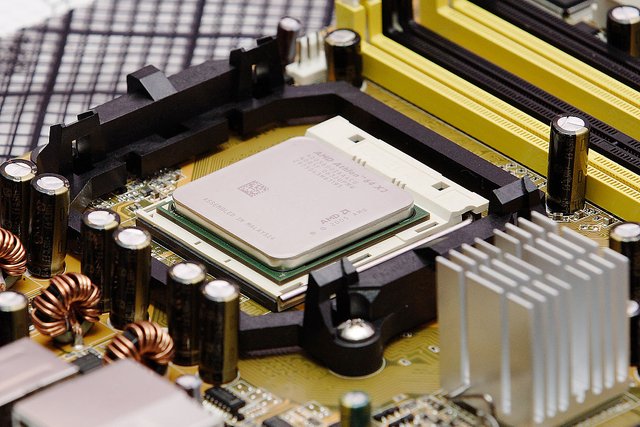
Essential capabilities of the microprocessor
ADVANTAGES AND DISADVANTAGES
The advantage of a microprocessor is that it was designed for heavier applications and as such can address large amounts of memory (RAM and ROM) are of type CICS and RICS.
It allows a great saving of instructions since the result of any instruction that operates with the memory, be it single or double operand, can be left in the same memory position of register w. as selected with a bit of the same instruction.
• Software upgradeable
• each update improves performance
• Better design and debugging
The disadvantages of the Microprocessor is that it does not have anything, it is a single chip and therefore you have to put the necessary interfaces to work (ROM, RAM, ports, oscillator, etc.).
Application to the instrumentation and control fields:
The revolution of the components. Creating micro and small components, especially in the digital area, having greater functionality to the instruments with a significant increase at cost.
• The processor revolution. Most of the intelligent instruments are based on microprocessors, emerging a platform that developed all the software enhancing the functionality
• The speed of the components. The high speed of operation allows to realize applications in real time adding greater functionality to the instrument.
• The components of the network. They can receive commands to perform actions remotely from the control equipment or send the results of the analysis to the visualization on computers, screens or control panels using a field data network.
• All these concepts highlight the functionality of the instrument and the distributed control system.
The incorporation of intelligent instruments and digital communication at the field level has shown an increase in interest in the development of high reliability, fault tolerant, architectural designs. Designers must now develop systems of high reliability, self-diagnosis to prevent and repair and in some cases the ability to function properly.
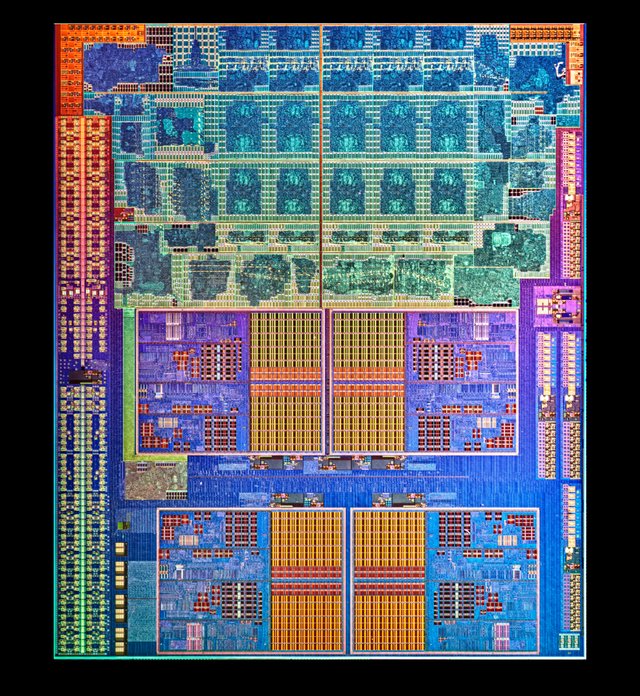
Conclusion:
The design of microprocessors was studied in engineering universities with a view to improving existing designs. Today it is preferred to teach microprocessors and computer architecture from the economic or quantitative point of view, from the point of view of cost-performance.
The introduction of microprocessor-based instruments has made possible the creation of new opportunities in the field of measurement and control. This development has been reflected in the realization of instruments of greater capacity and its interface with the control equipment through digital communication at the field level.
Although the mentioned technologies are commercial, there is a lack of knowledge and doubts regarding the future standardization of industrial automation. The results obtained will in some way serve to experimentally evaluate an industrial plant with the desire to solve problems in real time such as noise, interference, environmental factors, etc.
Adding the new developments and applied research, intelligent instruments and control will continue their ascent in the local and network optimization for the productive improvement.
REFERENCES
• Microprocessor; (https://es.wikipedia.org/wiki/Microprocesador
• https://www.definicionabc.com/tecnologia/microprocesador.php
• https://www.ecured.cu/Microprocesador
• www.profesorbot.com/curiosidad/nobel-de-fisica-grafeno/

Congratulations @borcast! You have completed some achievement on Steemit and have been rewarded with new badge(s) :
Click on any badge to view your own Board of Honor on SteemitBoard.
For more information about SteemitBoard, click here
If you no longer want to receive notifications, reply to this comment with the word
STOP